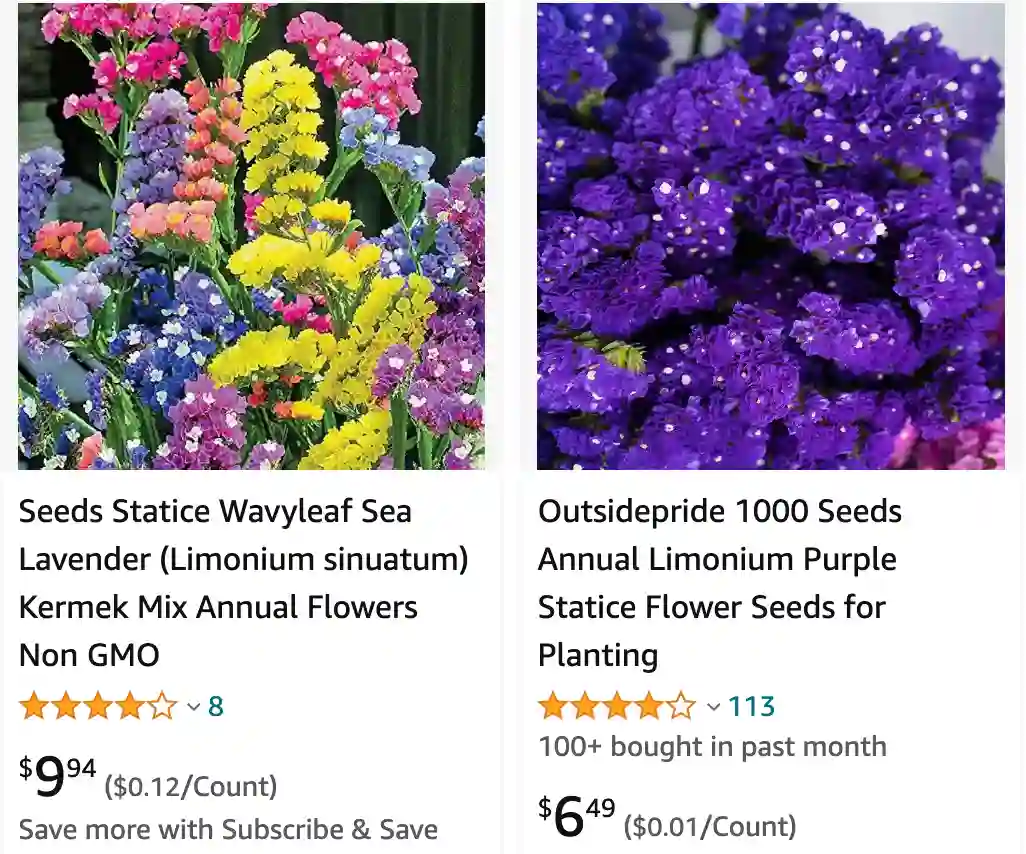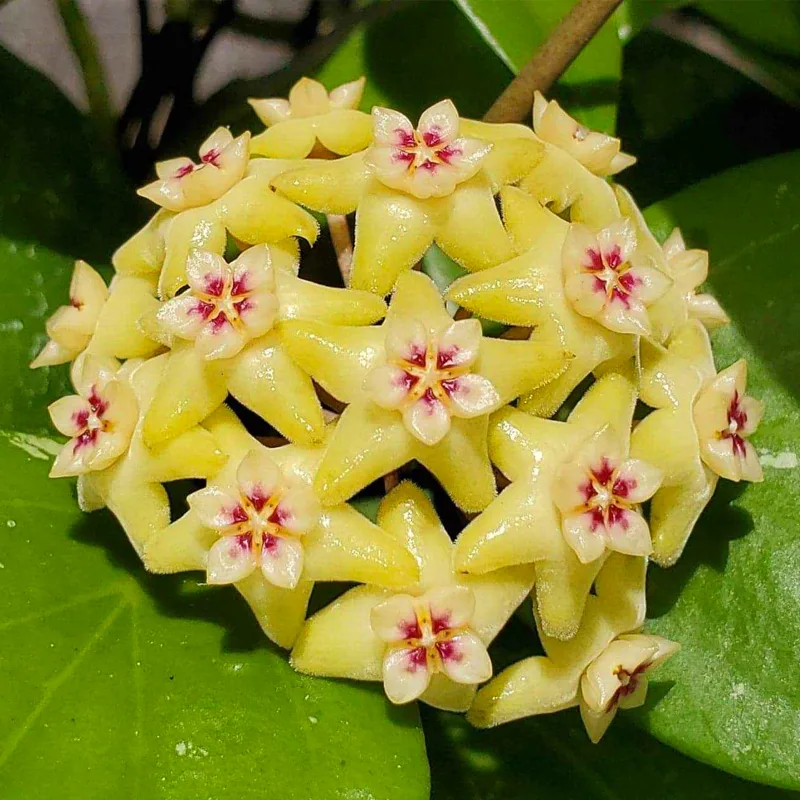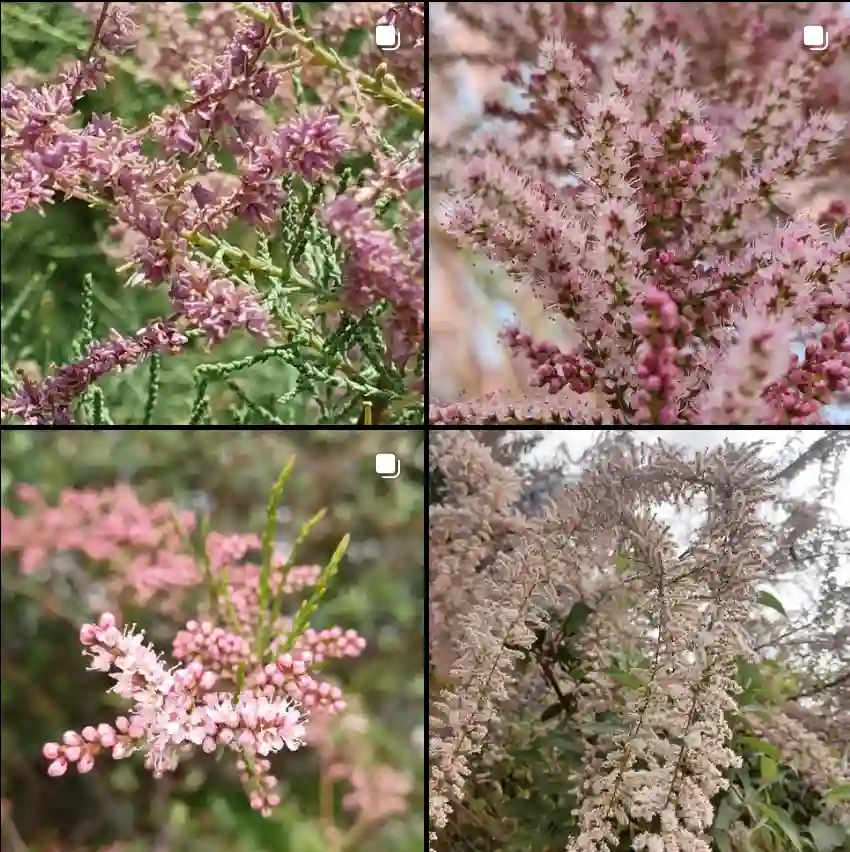
The Enduring Beauty of Limonium Sinuatum: From Garden to Vase
As a lover of all things beautiful and unique, I’m constantly drawn to plants that offer a touch of the extraordinary. Enter Limonium sinuatum, also known as statice or sea lavender. This captivating Mediterranean native has stolen a piece of my heart with its delicate, papery flowers and stunning range of colors.
But Limonium sinuatum’s charm goes beyond aesthetics. It’s a surprisingly easy-going plant, thriving in neglect and offering long-lasting blooms that transition beautifully into dried arrangements. Over the years, I’ve learned a lot about cultivating and preserving this floral gem, and I’m excited to share my experience with you.
618 Species in Genus Limonium
How to Grow Limonium Sinuatum?
Limonium sinuatum is a low-maintenance plant that flourishes in warm, sunny conditions. Here are some key things to keep in mind when growing this beauty:
- Sun: Aim for at least 6-8 hours of direct sunlight per day. This encourages bushier growth and vibrant flower production.
- Soil: Well-draining soil is crucial. Sandy loam or a mix with added sand is ideal. Avoid heavy, waterlogged soils as they can lead to root rot.
- Watering: Limonium sinuatum thrives on neglect when it comes to watering. Allow the soil to dry completely between waterings. Overwatering is a common mistake, so err on the side of underwatering.
- Planting: You can directly sow seeds outdoors in early spring, after the danger of frost has passed. Alternatively, start seeds indoors 6-8 weeks before the last frost and transplant seedlings outdoors once established. Space plants 12-16 inches apart.
- Feeding: While not essential, a light feeding with a balanced fertilizer during the growing season can encourage bushier growth and more blooms.
How to care forLimonium Sinuatum?
Once established, Limonium sinuatum requires minimal care. Here are a few additional pointers:
- Deadheading: Regularly removing spent flowers encourages continued blooming throughout the season. Simply pinch off the flower head where the stem meets the main stalk.
- Deadheading also promotes bushier growth as the plant will focus its energy on producing new flowers rather than setting seeds.
- Pruning: After flowering, you can cut back the stems by about a third to encourage new growth and maintain a neat shape.
How to Harvest Limonium Sinuatum for Drying?
The beauty of Limonium sinuatum extends far beyond its summer bloom. Its papery flowers hold their color and form exceptionally well, making them perfect for dried arrangements. Here’s how to harvest for drying:
- Timing is key: Harvest stems when the majority of the tiny flowers in the cluster have opened but before the individual florets start to fade. Ideally, a few florets at the base of the cluster can still be unopened.
- Cutting technique: Use sharp shears to cut the stems just below where they meet the main stalk.
- Bunching: Gather the stems together loosely and tie them with twine or string.
How to Dry Limonium Sinuatum?
There are a few effective methods for drying Limonium sinuatum:
- Air drying: This is the simplest method. Hang the bunches upside down in a cool, dark, well-ventilated area. A shed, attic, or garage can work well. Avoid direct sunlight as this can fade the colors. Drying time can take 2-3 weeks.
- Silica gel drying: This method speeds up the drying process and helps to preserve the vibrant colors. Place the Limonium sinuatum stems in an airtight container filled with silica gel. The flowers should be dry within a few days.
Are Limonium Sinuatum Edible?
While Limonium sinuatum isn’t considered toxic, it’s not generally eaten. The flowers have a slightly salty flavor and a tough texture, making them unpalatable for most.
What to Plant with Limonium Sinuatum?
Limonium sinuatum’s drought tolerance and love for sandy soil make it a great companion plant for other heat and drought-loving plants. Consider pairing it with:
- Yarrow (Achillea millefolium): Offers vibrant yellow flowers that complement the cool tones of Limonium sinuatum.
- Lavender (Lavandula): Creates a fragrant and visually pleasing combination with its purple blooms and silvery foliage.
- Russian Sage (Perovskia atriplicifolia): Adds a touch of elegance with its tall, wispy lavender flowers.
With its easy-going nature, stunning blooms, and long-lasting beauty, Limonium sinuatum is a plant that deserves a spot in any garden. Whether you enjoy fresh blooms dancing in the summer breeze or prefer the everlasting charm of dried arrangements, Limonium sinuatum offers something for everyone.
Additional Tips for Growing Limonium Sinuatum
Here are a few more things to keep in mind for successful Limonium sinuatum cultivation:
- Pests and Diseases: Limonium sinuatum is generally pest and disease resistant. However, keep an eye out for slugs and snails, which can munch on the leaves. Handpicking or using organic slug and snail control methods is recommended.
- Overwintering: In colder climates (zones below 7), Limonium sinuatum is typically grown as an annual. However, if you live in a milder climate, you can attempt to overwinter the plants. Mulch heavily around the base of the plant in late fall after the first frost. Alternatively, you can dig up the plants and pot them up for indoor wintering in a cool, sunny location.
Conclusion
Limonium sinuatum is a true gem of the plant world. Its delicate beauty, resilience, and versatility make it a rewarding addition to any garden. With a little planning and care, you can enjoy the captivating blooms of Limonium sinuatum throughout the season and well into winter with stunning dried arrangements. So, why not give this captivating Mediterranean native a try in your own garden? You might just be surprised by the magic it brings!
If i die, water my plants!



